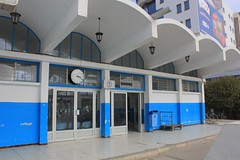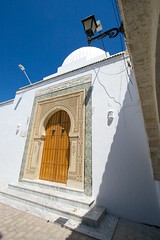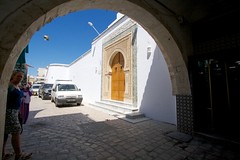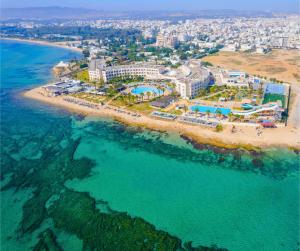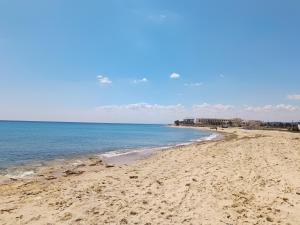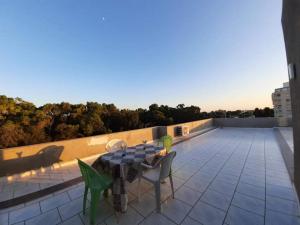Nabeul
Nabeul (English: /ˈnæbəl/; Arabic: نابل Nabel.wav; Tamazight: ⵏⴰⴱⴻⵍ) is a coastal town located in northeastern Tunisia, on the south coast of the Cape Bon peninsula and surrounded by the Mediterranean Sea on both sides. It is the first seaside resort in Tunisia. It is known for its agricultural riches and its touristic potentials. The city had a population of 73,128 as of the 2014 census.
History
Nabeul was founded in the fifth century BC by the Greeks of Cyrene, serving as a trade port. Its present name is an arabization of its Greek name Neapolis ("New City"), which was a common name of Greek colonies. In Roman times, the city was an important trade hub for grain from North Africa to Rome, and a centre for manufacture of garum for Rome.
On 21 July 365, a massive tsunami hit the city from the 365 Crete earthquake, resulting in much destruction and leaving part of it underwater.
During antiquity, Neapolis was also the seat of an ancient Christian bishopric The Bishopric was founded during the Roman Empire and survived through the arian Vandal and Orthodox Byzantine empires, only ceasing to function with the Muslim conquest of the Maghreb.
The diocese was refounded in name at least in the twentieth century as a titular see of the Roman Catholic church. Due to its location by the Mediterranean coast, it remains today a popular tourist destination and is the main centre of the Tunisian pottery industry.
Handicraft
Nabeul also is known in Tunisia and abroad for its handicraft that consists of artistic potteries, especially painted dishes as well as for wall tiles.
This craftwork was restarted during the first half of the twentieth century through the research of the French Tessier, Deverclos and the Tunisian Jacob Chemla.
Agriculture
Nabeul's agriculture relies on oranges, lemons, and the bitter orange also known in French as Bigardier. People of Nabeul also distill flowers of bitter orange, Bourbon geranium, and Damask rose. They sell it mainly in the local souks and export the rest to the world.
Gastronomy
Nabeul has been famous for its Harissa since the Andalusians arrived in Tunisia in the sixteenth century. They brought pepper and stored loads of it throughout the year. This activity called "El Oula" consists of preserving food ingredients all along the season and making it last longer in order to be consumed on a day-to-day basis. Many women in Nabeul are still committed to storing "El Oula" every year.
Twin towns
- Marbella, Spain
- Seto, Aichi, Japan
Hotels Nabeul
Looking for places related to Nabeul?
Those are other destinations to find places related to Nabeul:





